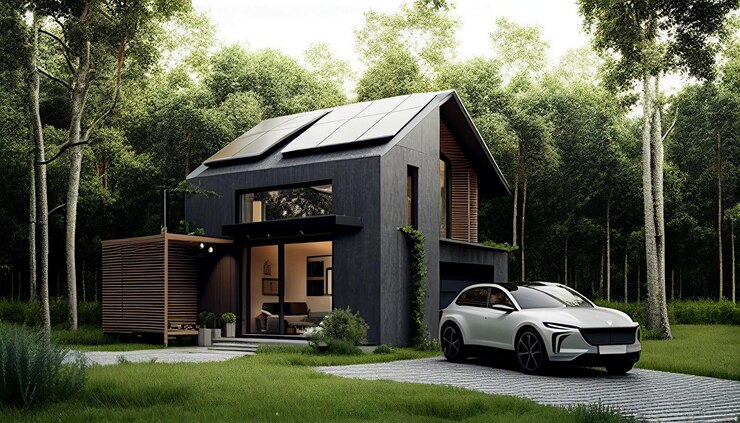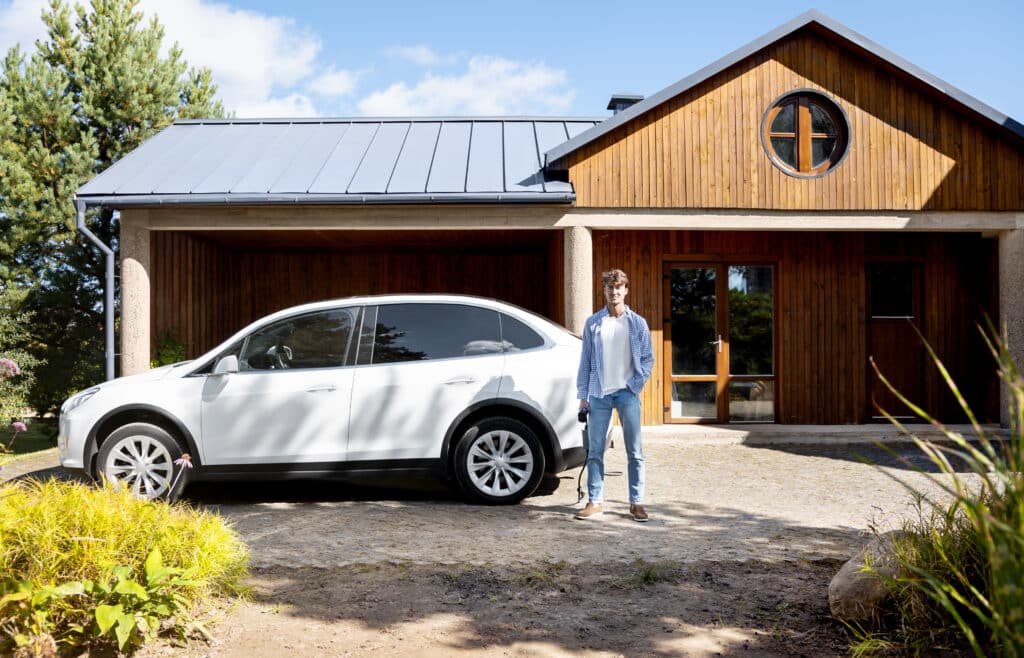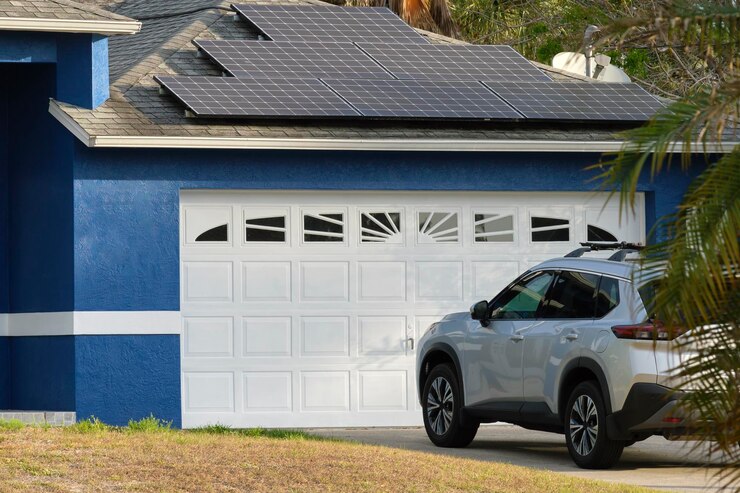
As environmental consciousness grows, more Bay Area homeowners are seeking green solutions for home improvement projects. One area generating interest is garage conversions designed to reduce energy consumption and carbon footprint.
This article explores eco-friendly garage makeovers happening across the region. Converting garages into livable spaces like home offices allows homeowners to add space while minimizing impact on the environment.
We’ll look at sustainable practices like installing solar panels, planting green roofs, and using recycled building materials. Local contractors adopting these techniques will be featured. For readers considering a garage conversion, this is a guide to green options in the Bay Area for transforming garages into functional, eco-friendly rooms.
What are Eco-Friendly Garage Conversions?
Eco-friendly garage conversions are a sustainable approach to remodeling that transforms underused or cluttered garages into functional living spaces while minimizing environmental impact.
This process involves the use of energy-efficient materials, renewable energy sources like solar panels, and the incorporation of green building practices that improve insulation and ventilation. By focusing on sustainability, these conversions not only enhance the usability of a home but also contribute to reducing the carbon footprint.
Key aspects include the selection of non-toxic, recycled, or upcycled materials for construction and finishes, installing energy-efficient windows and doors to improve natural lighting and reduce energy consumption, and incorporating smart home technologies that optimize resource use.
An eco-friendly garage conversion is designed to create a comfortable and healthy living environment that is both cost-effective in the long term and beneficial to the planet.
The Benefits of Eco-Friendly Garage Conversions

Environmental Sustainability
Eco-friendly garage conversions utilize sustainable and energy-efficient materials that have a minimal environmental impact. They promote the use of renewable resources and help reduce pollution. By choosing an eco-friendly conversion, homeowners can do their part to protect the planet.
Improved Energy Efficiency
Eco-friendly garage conversions are well-insulated and designed to reduce energy usage. High-performance doors and windows, solar panels, and Energy Star-certified appliances improve efficiency. The result is a comfortable living space that requires less energy to heat and cool, which also lowers utility bills.
A Healthier Indoor Environment
Eco-friendly building materials and proper ventilation create a healthier indoor environment. Low or no-VOC paints, stains, and adhesives reduce exposure to toxic chemicals. Proper insulation and an efficient HVAC system also improve indoor air quality. For homeowners with allergies or respiratory issues, an eco-friendly conversion can make a real difference in quality of life.
Increased Property Value
Eco-friendly garage conversions that incorporate sustainable and energy-efficient features can increase a home’s property value, especially in today’s real estate market where “green” homes are in high demand. Homeowners looking to sell can highlight these eco-friendly upgrades to attract buyers and potentially get a higher selling price. For those staying in the home long-term, higher property value also means lower property taxes.
Eco-friendly garage conversions offer many important benefits for both homeowners and the environment. By choosing sustainable building materials and energy-efficient systems, homeowners can enjoy a space that is better for the planet and their well-being.
Green Materials for Your Bay Area Garage Conversion
For an eco-friendly garage conversion in the Bay Area, homeowners should consider sustainable building materials.
Using reclaimed or recycled wood, brick, and metal in a garage conversion project helps reduce waste and the demand for new raw materials. Reclaimed wood from old barns or fencing can be used for flooring, paneling, and trim. Recycled metal panels or siding and reclaimed brick are excellent for exterior cladding.
Locally-Sourced Materials
Opting for materials sourced within 500 miles of the project site cuts down on emissions from long-distance transportation. Locally quarried stone, salvaged wood, and manufactured building products made of local raw materials are good options. Local craftspeople and artisans can also be hired to contribute one-of-a-kind elements like custom cabinetry, lighting fixtures, or accent tile.
Non-Toxic and Sustainable Products
Using non-toxic building products, sustainably and responsibly produced is key to an eco-friendly garage conversion. Look for materials certified by official green organizations like the Forest Stewardship Council, Sustainable Forestry Initiative, and Greenguard. Natural linoleum flooring, zero- or low-VOC paints and stains, LED lighting, and formaldehyde-free cabinetry and insulation are excellent choices.
An eco-friendly garage conversion in the Bay Area requires the use of sustainable, locally sourced, and non-toxic building materials. By opting for reclaimed, recycled, and certified green products, homeowners can turn their garage into a healthy and environmentally responsible living space. The result is a converted garage that treads lightly on the earth.
Energy-Efficient Design Options for Garage Makeovers

Insulation
Proper insulation is key to an energy efficient garage conversion. Adding insulation to the walls and ceiling can significantly reduce heating and cooling costs. Fiberglass or spray foam insulation are good options for garage walls. For the ceiling, loose-fill cellulose or fiberglass insulation with at least an R-30 rating is recommended. Insulating the garage doors, entry doors, and any windows will further improve energy efficiency.
Energy-Efficient Windows and Doors
Replacing old windows and doors with energy efficient models can reduce air leakage and improve insulation. Choose windows and doors with double or triple glazing, low-emissivity coatings, and insulated or weather-stripped frames for the best performance. For garages, aluminum or vinyl windows and doors tend to work well. Using energy efficient garage doors, especially if the garage will be used as living space, can provide substantial energy savings.
HVAC Systems
If the converted garage will be used as living space, installing an efficient HVAC system is important for comfort and energy savings. Consider a ducted heat pump or ductless mini-split system which can provide both heating and cooling. Programmable thermostats can further help reduce energy usage by more efficiently controlling the temperature. For garages used as workshops or storage, radiant floor heating, and portable cooling/heating units may be sufficient.
Energy Efficient Lighting
Switching to LED or CFL bulbs in the garage conversion can significantly improve energy efficiency as they consume less energy than incandescent bulbs. Installing dimmers or timers for lights allows adjusting the brightness which can also help save energy. Maximizing the use of natural lighting by installing more windows and skylights reduces the need for artificial lighting during the daytime.
Converting an existing garage to an energy efficient living space requires strategic design choices and investments that can pay off through lower utility bills and a comfortable space for years to come. With mindful planning and selection of energy-saving materials and systems, a garage makeover can become an eco-friendly conversion.
Top 5 Eco-Friendly Garage Conversion Ideas

Solar Panels
Installing solar panels on the roof of a converted garage is an excellent way to make the space more environmentally friendly. Solar panels harness energy from the sun and convert it into electricity that can power the garage. This renewable energy source reduces dependence on fossil fuels and lowers energy bills.
Energy Efficient Windows
New, energy efficient windows are a smart upgrade for a garage conversion. Double or triple-paned windows with low-emissivity coatings can significantly improve the insulation of the space. This reduces heat loss in the winter and heat gain in the summer, decreasing the amount of energy needed to heat and cool the garage.
LED Lighting
Replacing old incandescent light bulbs with LEDs is an easy, eco-friendly change. LEDs consume a fraction of the energy of incandescent bulbs and last up to 25 times longer. Switching to LED lighting is an affordable way to make a garage more energy-efficient and sustainable.
Recycled and Sustainable Materials
When converting a garage, using recycled and sustainable materials is ideal. This includes reclaimed wood, bamboo, cork, recycled glass tiles, and recycled metal fixtures. These materials reduce waste and the demand for raw natural resources. Their unique, rustic look also adds lots of character to the space.
Charging Station for Electric Vehicles
For owners of electric vehicles, installing a charging station in the garage is the perfect eco-friendly feature. An EV charging station powered by the solar panels on the roof allows vehicles to recharge using clean, renewable energy from the sun. This setup creates a sustainable system where an eco-friendly home powers an eco-friendly vehicle.
Overall, a garage conversion can be an opportunity to make a space much greener through energy efficiency upgrades, renewable energy sources, and sustainable building materials. With some smart changes, an ordinary garage can be transformed into an eco-sanctuary.
FAQs About Green Garage Conversions in the Bay Area
A green garage conversion transforms an existing garage into a livable space while utilizing eco-friendly building materials and energy-efficient systems. The conversion aims to reduce the overall environmental impact through sustainable construction and design. Common features include solar panels, Energy Star-rated appliances, LED lighting, low-VOC paints, and recycled building materials.
The average cost of a basic garage conversion in the Bay Area is between $30,000 to $80,000. Green or sustainable conversions typically range from $35,000 to $100,000 or more depending on the level of eco-friendly upgrades and finishes. Factors affecting the total cost include the conversion’s square footage, choice of materials, energy systems, and additional amenities.
Yes, permits are required for garage conversions to ensure the new space meets building codes and zoning laws. The specific permits needed depend on the conversion’s size and complexity. At a minimum, a building permit, electrical permit, and plumbing permit may be required. The permit process can take 6 to 12 weeks to complete. Hiring a contractor experienced with garage conversions and green building can help navigate the permitting process.
The duration of a green garage conversion project depends on the conversion’s total scope of work and choice of materials and systems. On average, a basic conversion with eco-friendly upgrades takes 3 to 6 months to complete. More complex, custom sustainable conversions may take up to 9 months or longer. The timeline also accounts for the time required for proper permitting, inspections, and final approvals before occupying the new space.
Conclusion

As the San Francisco Bay Area continues to grow in population, homeowners are getting creative with existing spaces to accommodate multi-generational families. Converting garages into livable areas provides needed space while retaining architectural character. Companies like Rhino Garage Conversion Bay Area use sustainable practices to transform garages into comfortable homes while minimizing the carbon footprint.
Our expert team handles everything from permits to finished work. For Bay Area residents seeking to modernize their homes, garage conversions present an eco-friendly option to add value and re-purpose unused areas. With customized designs and green materials, the possibilities are endless for garage makeovers in this innovative region.

